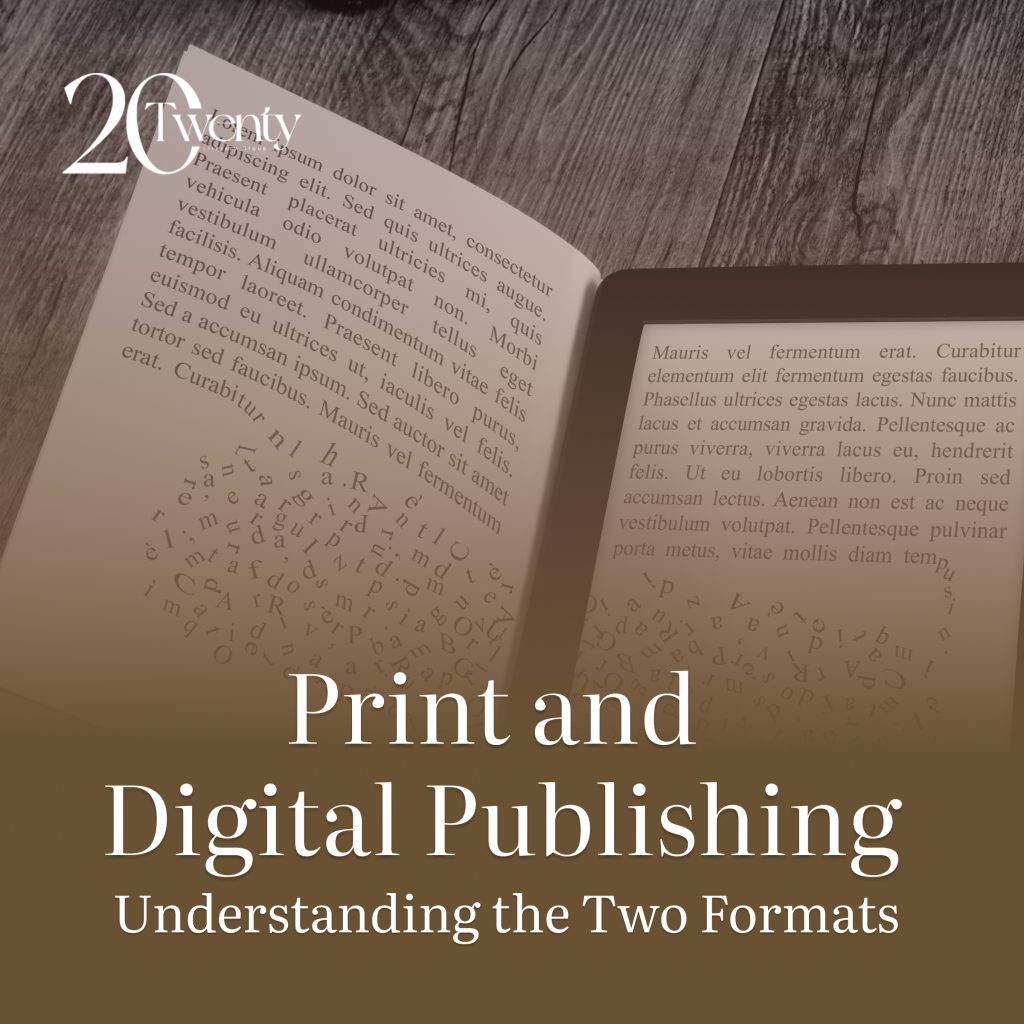In the modern publishing landscape, authors can reach readers through various formats, including print and digital. Understanding the differences between these formats and their respective advantages and considerations is essential for authors looking to publish their work.
The Rise of Digital Publishing
Digital publishing has experienced significant growth and transformation in recent years. The advent of eBooks, audiobooks, and online platforms has revolutionized how readers consume content. Digital publishing offers authors greater accessibility, global reach, and opportunities for self-publishing.
Advantages of Print Publishing
Print publishing retains its charm and appeal in the publishing industry. A unique tactile experience is associated with holding a physical book, turning its pages, and displaying it on a bookshelf. Print books offer a sense of permanence and collectability that resonates with many readers. Additionally, print publishing provides a more traditional and established distribution infrastructure through bookstores, libraries, and physical events.
Advantages of Digital Publishing
Digital publishing provides several advantages that have transformed the reading experience. eBooks and audiobooks offer convenience, allowing readers to access a vast library of titles on their devices anytime and anywhere. Digital formats also provide features such as adjustable font sizes, bookmarking, highlighting, and searchability, enhancing the reading experience for individuals with different preferences and needs. Furthermore, digital publishing opens opportunities for self-publishing, enabling authors to bypass traditional publishing gatekeepers.
Distribution Channels
Print publishing primarily relies on physical distribution channels, including bookstores, libraries, and direct orders from publishers or authors. Distribution to bookstores often involves negotiations with distributors and considerations for shelf space. In contrast, digital publishing utilizes online platforms such as Amazon Kindle, Apple Books, and various ebook retailers. These platforms provide global accessibility and instant delivery to readers’ devices.
Reader Preferences
Reader preferences vary when it comes to print and digital formats. Some readers appreciate the tangible experience of holding a physical book and the aesthetic pleasure of book collections. Others prefer convenience, portability, and instant access to a vast digital library. Understanding your target audience’s preferences can help you determine which format to prioritize or consider offering both options.
Choosing the Right Format
When deciding between print and digital publishing, consider your goals, target audience, budget, and marketing strategy. Evaluate the advantages and disadvantages of each format about your specific book and its intended readership. Authors sometimes release print and digital versions to cater to a broader range of readers and preferences.
Print and digital publishing offer different opportunities and considerations for authors. Print publishing provides a tangible and traditional reading experience, while digital publishing offers convenience, accessibility, and global reach. By understanding the advantages and distribution channels of each format and considering reader preferences and your own goals, you can make an informed decision about which format to choose or whether to offer both. Remember that both forms have their merits, and embracing both opportunities can help maximize your work’s visibility and impact.
FAQs
Can I publish my book in both print and digital formats simultaneously?
Yes, many authors publish their books in print and digital formats to cater to a broader audience and provide options for different reader preferences.
Do I need a traditional publisher to publish my book in print?
While traditional publishers have established distribution networks and resources, self-publishing options, such as print-on-demand services, allow authors to publish their books in print without needing a conventional publisher.
Which format is more cost-effective for publishing?
The cost-effectiveness of publishing depends on various factors, such as the printing and distribution methods chosen for print publishing and the marketing efforts required for digital publishing. It’s essential to assess your budget and goals when deciding which format is more cost-effective for your project.
Are eBooks and audiobooks gaining popularity over print books?
eBooks and audiobooks have gained significant popularity in recent years, offering convenience and accessibility. However, print books still hold a strong presence and appeal to many readers who appreciate the physical reading experience.
Can I switch from digital to print publishing after the initial release?
Yes, it is possible to switch between formats after the initial release. Many authors release their books initially in one form and then expand to include the other structure based on demand or as part of a marketing strategy.

